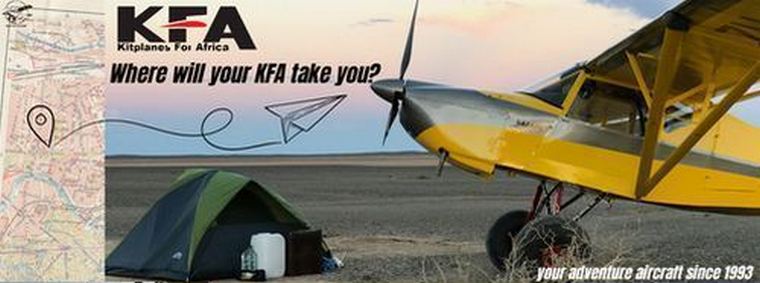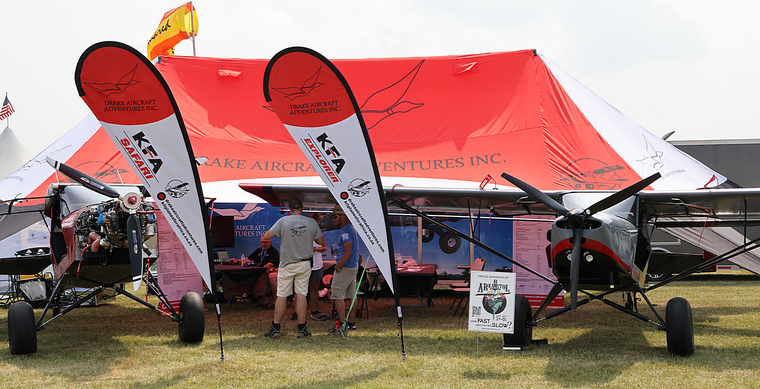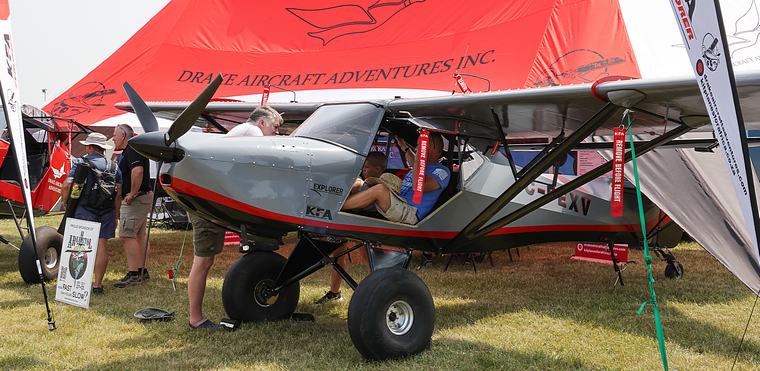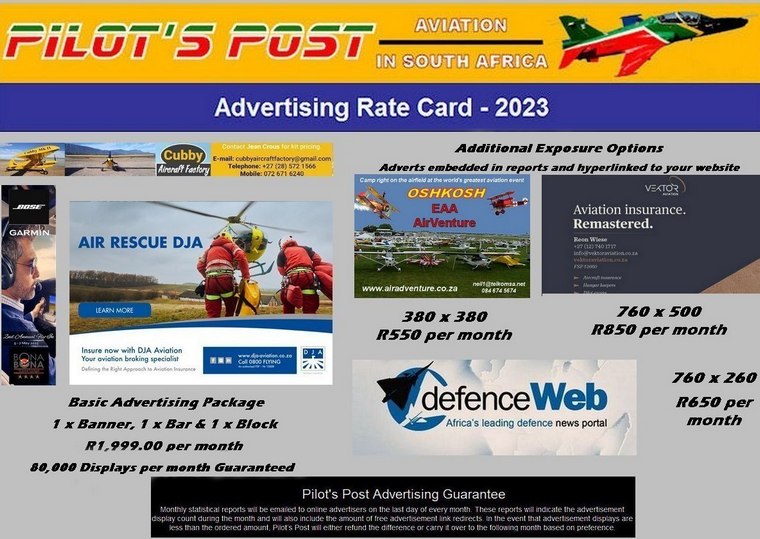



















Stefan Coetzee and Kit Planes for Africa
By Pics and report by Willie Bodenstein
Google Banner Ad

Stefan embarked on his aviation journey some 23 years ago, driven by a persistent desire to fly. Back then, residing in Komatipoort in Mpumalanga with his wife Sanet, he yearned to take to the skies. Sanet, recognizing his passion, urged him to pursue his dream by using their first bumper crop harvest funds to secure his pilot's license, a journey that took about a year due to the distance between Komati and Nelspruit, the nearest airport.
Stefan and the company's Safari at KFA's base at Petit Airfield
Upon acquiring his wings, Stefan faced a new challenge: the expense of flying. Fate intervened during a holiday in Margate when a serendipitous encounter with a BMW sporting a sign reading 'Learn to fly microlights' sparked a pivotal moment. Meeting Derek Thompson at the airport led to Stefan's swift immersion in the world of microlight aviation. In just two weeks, he completed his weight shift conversion, obtaining vital flying hours but lacking a personal aircraft.

On a visit to Pyramid Airfield
Fortune favoured him when a friend offered an old, worn-out Windless aircraft for purchase, unknowingly setting the stage for Stefan's aviation ascent. He logged countless hours on this aircraft, eventually securing his instructor's rating under Jeff Dyer at Light Flight. Despite initially lacking financial means, his determination drove him to earn ratings on Bushbaby and Thunderbird by 2005.
Getting ready to fly the Safari
Fuelled by his newfound expertise, Stefan envisioned establishing a microlight flying school, recognizing the absence of such facilities in the Lowveld. Setting up a school at Komatipoort Airfield marked the beginning, but limitations as a C-grade instructor prompted him to seek mentorship from experienced Grade A instructors like Braam Hechter and Graig Cousins, who supported his journey towards higher ratings.
The company's first product, the Bushbaby
As life took its course, Stefan and Sanet sold their farm as part of a government restitution initiative, redirecting Stefan's focus away from a construction business towards a full-time aviation venture. His devotion to the Bushbaby aircraft led him to start building kits at the Komatipoort hangar, a passion project that sparked negotiations to acquire KFA (Kitplanes for Africa) from its owner.
Followed by the Explorer
Acquiring KFA introduced fresh challenges; Stefan lacked formal qualifications necessary for the aviation industry. Partnering with an experienced AME (Aircraft Maintenance Engineer) resolved this hurdle, enabling Stefan to delve into aircraft engineering and design, eventually leading to sole ownership of KFA. Their portfolio expanded to include the Explorer Mk1, later certified as a 600kg microlight in Europe, and subsequent models like the Safari, undergoing meticulous design and development to comply with evolving industry standards.
An Explorer and a Bushaby in formo
A pivotal encounter with a German pilot and regulatory figure further shaped KFA's trajectory, influencing preparations for new ultra-light aircraft regulations in Germany. This foresight allowed KFA to position the Explorer for compliance well in advance, leading to their certification under the updated rules.
And the Safari
The turning point arrived when KFA showcased its products at Aero Friederichshafen in 2019, catapulting their presence in the German market and establishing a global footprint under the UL DULF certification, enabling sales worldwide adhering to similar aviation regulations.
One of KFA's hangars at Petit airfield


The KFA Exhibit at AirVenture 2023 (Photos by Jaco Pitout)
Moreover, KFA's influence extended globally, with kits finding homes in Australia, New Zeeland, the UK, the US, and even as far as Mongolia, indicating the breadth of their reach. Presently, the factory operates at nearly full capacity, crafting an average of six aircraft per month to meet escalating demand.

Kit Planes for Africa Factory Tour

Google Banner Ad
 |
 |
 Copyright © 2024 Pilot's Post PTY Ltd
The information, views and opinions by the authors contributing to Pilotís Post are not necessarily those of the editor or other writers at Pilotís Post.
Copyright © 2024 Pilot's Post PTY Ltd
The information, views and opinions by the authors contributing to Pilotís Post are not necessarily those of the editor or other writers at Pilotís Post.